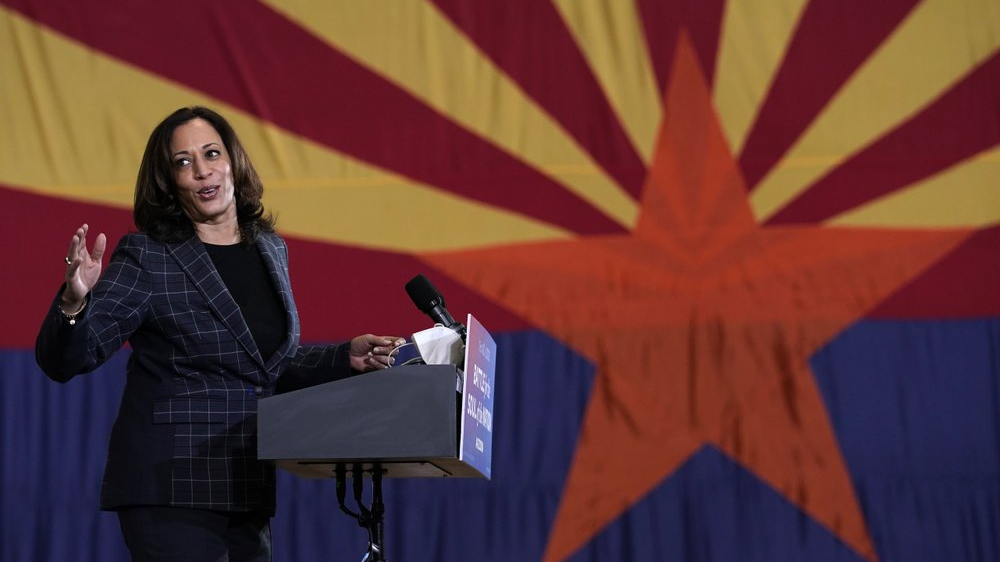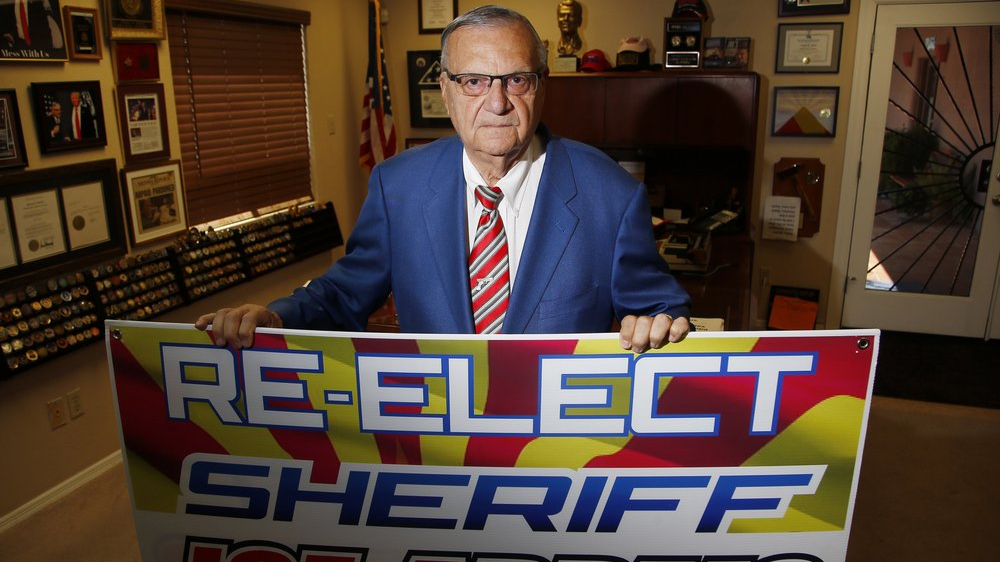
Democratic vice presidential candidate Senator Kamala Harris speaks to "first week voters" at Carpenters Local Union 1912 in Phoenix, U.S., October 8, 2020. /AP
Democratic vice presidential candidate Senator Kamala Harris speaks to "first week voters" at Carpenters Local Union 1912 in Phoenix, U.S., October 8, 2020. /AP
Arizona's importance as a key battleground in the upcoming U.S. presidential election was made abundantly clear when Joe Biden, Kamala Harris and Mike Pence all showed up in the state earlier this month.
In recent weeks, activists have campaigned in immense heat wearing face masks, going door to door wooing voters. Some even traveled hundreds of miles away from neighboring states like California to the aide. This is because whoever wins the Grand Canyon state with its 11 electoral votes could potentially win the White House and secure control in the Senate.
Home to iconic conservative leaders like Barry Goldwater, John McCain and Sandra Day O'Connor, Arizona has voted Republican consistently in every presidential election since 1952 except one. This time around, however, various polls are indicating that the state might flip on the idiosyncratic Republican nominee, incumbent President Donald Trump.
"I never would have thought I'd be living in a time when Arizona would go blue, but I think this administration, what they have done to this country, is exactly why it's going to go blue," Cindy McCain, widow of Senator John McCain told WCVB.
There are a number of factors that moved Arizona to the left this time around, including an increase in residents moving from more liberal states in recent years and a dimming view of President Trump during the COVID-19 pandemic, according to Kim Fridkin, professor of political science at Arizona State University. Another important factor is the influx of Latino and Hispanic population.
Latino voters are part of the youngest and fastest-growing electorate in the U.S. The number of eligible Latino voters doubled from 2004 to 2020, reaching 32 million, according to Pew Research Center.

Democratic presidential candidate and former Vice President Joe Biden (L) and Democratic vice presidential candidate Senator Kamala Harris visit the Carpenters Local Union 1912 in Phoenix, U.S., October 8, 2020. /AP
Democratic presidential candidate and former Vice President Joe Biden (L) and Democratic vice presidential candidate Senator Kamala Harris visit the Carpenters Local Union 1912 in Phoenix, U.S., October 8, 2020. /AP
During a rally held in Phoenix, Biden and Harris sympathized on the economic pains experienced by locals, especially the Latino population under the "chaotic" and "divisive leadership" of Trump administration.
"You are facing real challenges right now, and the last thing you need is a president who exacerbates the problems," Biden told a selected, small crowd on October 8.
Economic downturn caused by the pandemic has hit Latinos and Hispanics especially hard, as the unemployment rate for Hispanics increased from 4.8 percent in February to 18.5 percent in April and dropped back to 14.5 percent in June.
Maricopa County was home to the fourth largest growing Latino and Hispanic population in the entire country, according to Pew Research Center. Those who identify as Hispanic or Latino make up nearly 30 percent of the county's population, and the median age of Hispanics in the state is lower than it is in many states where the population exceeds 1 million Hispanic residents.
"Maricopa County is the largest county jurisdiction in the country in a swing state, so we know that the eyes of our country are on us. The path to the U.S. presidency goes right through Maricopa County," Phoenix Mayor Kate Gallego said.
Arizona's tectonic shift seems more plausible when considering the state's history of persecuting its Latino populations in recent decades.

Former Maricopa County Sheriff Joe Arpaio poses for a picture in his office as he is running for the position of Maricopa County Sheriff again, Fountain Hills, Arizona, U.S., July 22, 2020. /AP
Former Maricopa County Sheriff Joe Arpaio poses for a picture in his office as he is running for the position of Maricopa County Sheriff again, Fountain Hills, Arizona, U.S., July 22, 2020. /AP
Under former Governor Jan Brewer, Arizona became the epicenter of a nationwide crackdown on illegal immigrants who mainly come from Latin America. It also fueled the rise of the long-reining Maricopa County Sheriff Joe Arpaio, who has been accused of targeting Latinos and Hispanics in his raids.
"I didn't think it would happen this soon," Brewer told the Associated Press. "But I think we have done a bad job of trying to educate them, the new population, that they ought to be Republican."
Trump won Maricopa County by roughly 3 percentage points, a narrower margin than two previous Republican presidential candidates. This time, exit polls show Hispanics favor the Democrats by about a 2-to-1 margin.
According FiveThirtyEight, a website that focuses on polling analysis, Biden has a 65 percent chance of winning the state with a lead between 4.5 to 5 percentage points in September. While the latest New York Times/Siena College poll has Biden leading at 49 percent to Trump's 41 percent, with just 6 percent of likely voters remaining undecided.